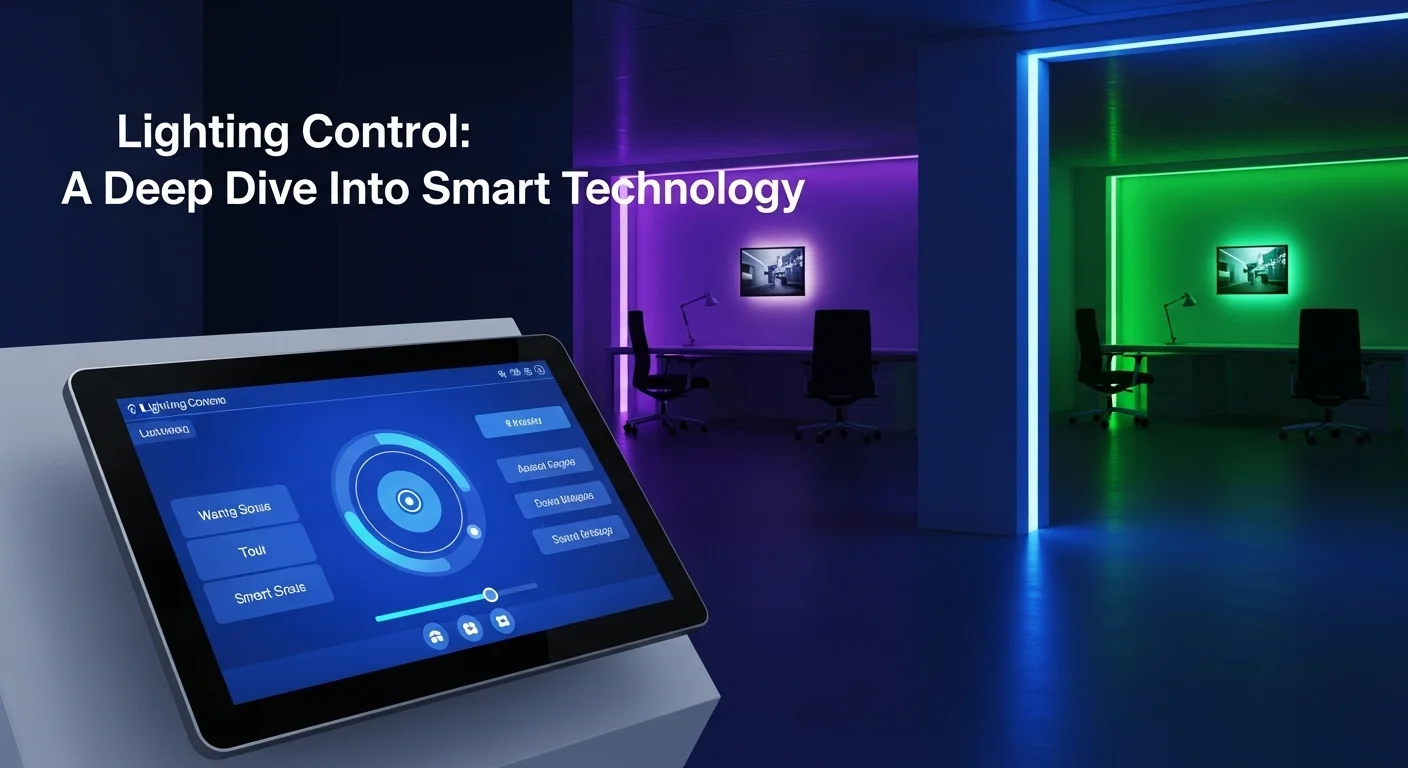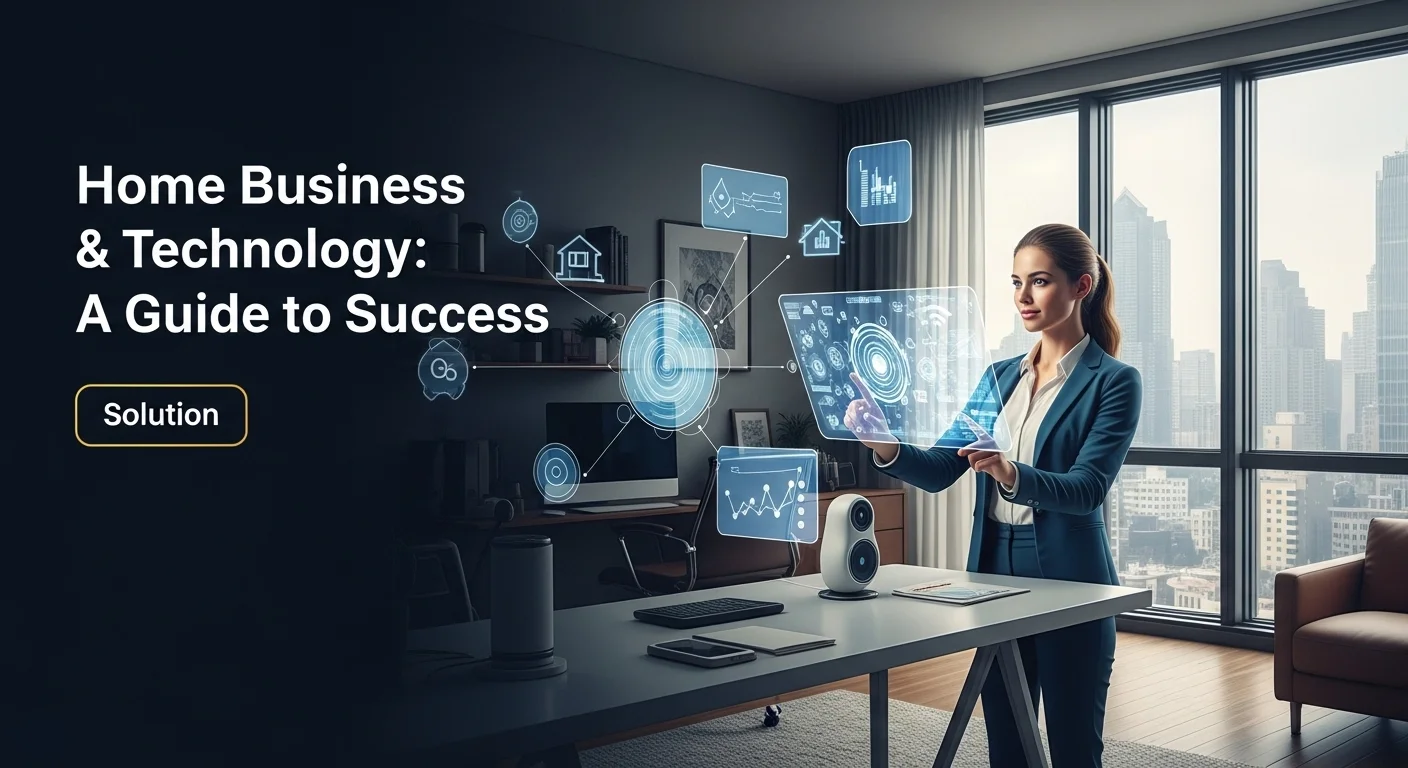Lighting Control: A Deep Dive into Smart Technology

Executive Summary
Lighting control technology has evolved from simple manual switches to sophisticated, intelligent systems that form the backbone of modern smart homes and buildings. This article explores the multifaceted world of lighting control, a critical aspect of today's technology landscape. We will delve into the components, benefits, and applications of these systems, from enhancing user comfort to achieving significant energy savings. The discussion will cover everything from a basic smart light controller to a comprehensive building management lighting control system, providing a clear understanding of their importance for both businesses and tech enthusiasts. You will learn about the different types of control, including residential lighting control for personalized home environments and large-scale solutions for commercial properties. We will also examine specific products like Shelly lighting control devices, known for their versatility, and the functionality of a smart light control panel, the central interface for managing complex lighting schemes. This exploration will highlight how integrating advanced lighting control is no longer a luxury but a fundamental component of efficient, secure, and responsive environments in the digital age.
Table of Contents
What is Lighting Control and why is it important in Technology?
Lighting control is a foundational element of modern building and home automation, representing the technology and methodologies used to manage artificial and natural light in a given space. At its core, it’s about providing the right amount of light, at the right place, and at the right time. Historically, this meant a simple on/off switch on a wall. However, in the context of contemporary technology, lighting control has transformed into a complex and intelligent network-based system. It incorporates a wide array of inputs, such as sensors and schedules, with various outputs, like dimmers and switches, all orchestrated by one or more central computing devices. This evolution is crucial because lighting accounts for a significant portion of global energy consumption, approximately 19% of the world's electricity use. Therefore, intelligent control is not just a matter of convenience but a critical strategy for energy efficiency, cost savings, and environmental sustainability.
The importance of lighting control in technology extends far beyond simple energy savings. It is a key enabler of the Internet of Things (IoT) within our living and working environments. Modern systems enhance user comfort and productivity by allowing for highly customizable lighting scenes tailored to specific tasks or moods. For instance, a workspace can have brighter, cooler light during peak work hours to improve focus, while a living room can have warmer, dimmer light in the evening to promote relaxation. This ability to tailor our environment is a cornerstone of human-centric design, which aims to create spaces that support our well-being. Furthermore, advanced lighting control systems contribute to safety and security. Automated outdoor lighting with motion sensors can deter intruders, while integrated systems can flash lights during a fire alarm to alert occupants who may be hearing impaired.
The Core Components of Modern Lighting Control
To understand the technological significance of lighting control, it's essential to break down its core components. These systems, whether simple or complex, are generally comprised of input devices, a central controller, and output devices.
- Input Devices: These are the sensors and interfaces that gather information or receive commands. Common examples include occupancy sensors (detecting presence), photosensors (measuring daylight), timers, keypads, and mobile apps. An advanced smart light control panel serves as a sophisticated input device, offering a centralized point for users to manually override automated schedules, select pre-programmed scenes, or dim specific zones.
- The Controller: This is the brain of the operation. A smart light controller processes the information from input devices and sends the appropriate commands to the output devices. In a simple setup, this might be a single smart switch. In a larger system, it could be a dedicated processor or a cloud-based platform. This controller houses the logic of the system—the 'if this, then that' rules that govern the lighting's behavior. For example, if the occupancy sensor detects no movement for 15 minutes and the photosensor indicates sufficient daylight, the controller will command the lights to turn off.
- Output Devices: These are the components that directly affect the light source. They include relays (for on/off switching), dimmers (to adjust brightness), and drivers (for LED luminaires). These devices receive signals from the controller and modulate the power flowing to the lights accordingly.
The Rise of Smart and Integrated Systems
The real technological leap has been in the networking and intelligence of these components. Protocols like DALI (Digital Addressable Lighting Interface), KNX, Zigbee, and Z-Wave allow devices from different manufacturers to communicate with each other, creating interoperable ecosystems. This interoperability is crucial for both residential lighting control and large-scale building management lighting control. In a smart home, your lighting system can integrate with your voice assistant (like Alexa or Google Assistant), security system, and even your smart blinds for a holistic automation experience.
For businesses, integrating lighting into a building management lighting control system offers profound benefits. Such a system centralizes the monitoring and control of not just lighting, but also HVAC (heating, ventilation, and air conditioning), access control, and other building services. This integration allows for more sophisticated energy-saving strategies. For example, the system can know which parts of the building are occupied based on access card swipes and adjust both lighting and temperature accordingly, leading to massive operational efficiencies. Facility managers can monitor energy consumption in real-time, identify faults automatically, and optimize the building's performance from a single dashboard.
Specialized Solutions: The Role of Shelly and DIY
While large-scale commercial systems from brands like Lutron or Crestron are powerful, the rise of affordable, modular technology has democratized smart lighting. This is where products like Shelly lighting control devices come into play. Shelly offers a range of small, Wi-Fi-enabled relays and dimmers that can be installed behind existing light switches or in electrical boxes. This allows users to retrofit their homes and make their existing 'dumb' lights smart without extensive rewiring or investment. A Shelly device acts as both a controller and an output device, connecting to the home's Wi-Fi network and allowing control via a mobile app or integration with other smart home platforms. This accessibility has been a game-changer for the residential lighting control market, empowering tech enthusiasts and homeowners to build customized solutions tailored to their specific needs. They can start with a single room and expand over time, creating a flexible and scalable smart home. The success of brands like Shelly highlights a key trend in technology: the move towards open, accessible, and user-friendly solutions that bridge the gap between professional-grade systems and consumer electronics.
The Convergence of AI and Cybersecurity in Lighting
Looking ahead, the next frontier for lighting control technology is the integration of Artificial Intelligence (AI) and a robust approach to cybersecurity. AI is set to make lighting systems not just automated, but truly adaptive and predictive. An AI-powered system can learn the occupancy patterns of a building and adjust lighting schedules proactively, rather than just reactively. It can analyze data from various sensors to optimize for both energy savings and occupant well-being, a concept known as human-centric lighting, which adjusts color temperature and intensity throughout the day to mimic natural light and support circadian rhythms. For example, an AI could detect that a particular meeting room is consistently empty on Friday afternoons and automatically adjust the lighting and HVAC schedules for that time, saving energy without any manual intervention.
However, as lighting systems become more connected and data-rich, they also become potential targets for cyberattacks. A compromised building management lighting control system could be more than an inconvenience; it could be a vector for attackers to access more critical IT networks within a facility. A hacked system could lead to service disruptions, energy waste, or even be used in a Distributed Denial of Service (DDoS) attack. Therefore, cybersecurity is a critical consideration in modern lighting control design. This involves securing every layer of the system, from the individual device to the network and the cloud platform. Best practices include using strong encryption (like AES 128-bit), robust authentication methods to ensure only authorized devices can join the network, and network segmentation (using VLANs) to isolate the lighting control network from other corporate IT systems. Manufacturers, installers, and facility managers must all share the responsibility of ensuring these systems are secure throughout their lifecycle, from specification and commissioning to ongoing maintenance and updates. The future of lighting control is one of immense potential, but it must be built on a secure and intelligent foundation to be truly effective and trustworthy.

Complete guide to Lighting Control in Technology and Business Solutions
Embarking on the journey of implementing a lighting control system, whether for a single-family home or a sprawling corporate campus, requires a deep understanding of the available technologies, business implications, and technical methodologies. This guide provides a comprehensive overview of these aspects, offering a roadmap for business owners, IT professionals, and technology enthusiasts. The goal is to move beyond the conceptual to the practical, detailing how to select, deploy, and manage these powerful systems effectively.
Technical Deep Dive: Protocols and Architectures
The backbone of any lighting control system is its communication protocol—the language that devices use to speak to one another. The choice of protocol has significant implications for cost, scalability, and functionality. Here’s a breakdown of the most common options:
- Wired Protocols (0-10V, DALI, KNX):
0-10V: This is one of the earliest and simplest analog dimming protocols. It uses a dedicated pair of low-voltage wires to send a DC voltage signal from the controller to the driver, with 10V being full brightness and 1V being the minimum level (0V typically signals 'off'). While reliable and inexpensive, it's a one-way communication system and offers no individual addressing, meaning all lights on a single circuit dim together.
DALI (Digital Addressable Lighting Interface): DALI is a two-way digital protocol that represents a significant step up. It allows for individual control and monitoring of each luminaire (up to 64 per DALI line), even if they are on the same electrical circuit. This addressability provides immense flexibility for zoning and scene-setting, which can be reconfigured through software without any physical rewiring. The two-way communication enables fixtures to report their status and energy consumption, which is invaluable for maintenance and energy management in a building management lighting control system.
KNX: KNX is a robust, open standard for building automation that goes beyond lighting. It can integrate HVAC, blinds, security, and more into a single, unified system. It's a decentralized system, meaning each device has its own intelligence, which enhances reliability—a failure in one device won't bring down the entire network. KNX is highly scalable and powerful, making it a popular choice for high-end commercial and residential projects. - Wireless Protocols (Wi-Fi, Bluetooth Mesh, Zigbee, Z-Wave):
Wi-Fi: Ubiquitous and easy to set up, Wi-Fi is the protocol of choice for many consumer-grade smart devices, including the popular Shelly lighting control products. Devices connect directly to a standard Wi-Fi router, eliminating the need for a dedicated hub. While convenient, it can lead to network congestion if too many devices are added, and its power consumption can be higher than other wireless protocols, making it less ideal for battery-powered sensors.
Bluetooth Mesh: Instead of each device connecting to a central point, Bluetooth Mesh creates a network where devices can relay messages to one another. This extends the range and improves the reliability of the network. It's a low-power technology well-suited for lighting control, and systems like Casambi have popularized its use in professional settings. A user can control the entire network by connecting to a single light fixture.
Zigbee & Z-Wave: These are low-power mesh networking protocols designed specifically for home automation. They require a dedicated hub or gateway to bridge communication between the devices and the user's Wi-Fi network. They are highly reliable and efficient, creating a separate network for smart devices to reduce interference with Wi-Fi. Many comprehensive residential lighting control systems, like those from Philips Hue (Zigbee) and many security systems, are built on these protocols.
System Architecture: Centralized vs. Decentralized
Lighting control systems can be designed with either a centralized or decentralized architecture. In a centralized system, a single master smart light controller or processor makes all the decisions. This is common in systems that require complex logic and integration with other building services. A decentralized system, on the other hand, distributes intelligence across the network to individual devices. For example, a sensor might be programmed to directly control a specific group of lights. This approach increases resilience, as the system can continue to function even if a central controller fails. Hybrid systems are also common, combining the benefits of both architectures.
Business Solutions: ROI, Efficiency, and User Experience
For businesses, the decision to invest in a sophisticated lighting control system is driven by more than just technological appeal. The primary motivator is often Return on Investment (ROI), which is calculated through several key benefits:
- Energy Savings: This is the most direct financial benefit. Strategies like occupancy sensing (turning lights off in empty rooms), daylight harvesting (dimming artificial lights when natural light is present), and high-end trim (setting a maximum brightness level below 100%) can reduce lighting energy costs by 30-50%, and in some cases, up to 90%. A building management lighting control system can provide detailed energy reports, verifying these savings and helping to meet sustainability targets and building codes.
- Operational Efficiency: Automated systems reduce the burden on facility management staff. Centralized control via a smart light control panel or software dashboard means that adjustments and scheduling can be done remotely and efficiently, without needing to physically visit each space. The ability of DALI systems to report lamp failures streamlines maintenance, reducing downtime and labor costs.
- Enhanced Productivity and Well-being: While harder to quantify, the impact on occupants is a significant business benefit. Good lighting has been shown to improve concentration, reduce eye strain, and boost morale. Human-centric lighting systems that adjust color temperature throughout the day can improve employee alertness and support better sleep cycles, leading to a more productive and healthier workforce. Offering users personal control over their local lighting can also increase job satisfaction.
Choosing the Right Components
Selecting the right hardware is critical for a successful implementation. The choice between a simple smart bulb and a full-fledged system depends on the project's scale and goals.
- For a simple start or retrofitting (Residential): Smart bulbs and plug-in devices are the easiest entry point. For more integrated control, installing a Shelly lighting control device behind a standard switch offers a seamless way to make an entire circuit smart. This is a cost-effective approach for most residential lighting control needs.
- For new builds or major renovations (Residential & Commercial): A dedicated system using smart switches and dimmers is a more robust solution. This provides a consistent user experience, as the wall controls always work, regardless of the app or voice assistant status.
- For large commercial spaces: A fully networked system, likely using DALI or a wireless mesh protocol integrated into a building management lighting control system, is the standard. The choice of a smart light control panel is also important here. It should be intuitive for non-technical staff to use for daily tasks like activating meeting room scenes or overriding schedules for special events.
Cybersecurity: A Non-Negotiable Aspect
As discussed, the connectivity of these systems introduces vulnerabilities. A comprehensive business solution must include a cybersecurity strategy from day one. When evaluating systems, ask vendors specific questions about their security measures: Do they use end-to-end encryption? What are their device authentication methods? How are firmware updates delivered securely? For any building management lighting control system, it is imperative to implement network segmentation, creating a separate VLAN for operational technology (like lighting and HVAC) to isolate it from the corporate IT network. This prevents a potential breach in a less secure IoT device from becoming a gateway to sensitive company data. Regular security audits and prompt patching of vulnerabilities are essential ongoing practices to maintain a secure system. The integration of lighting control into the broader IT infrastructure means that cybersecurity is no longer an afterthought but a core requirement for any modern business solution.

Tips and strategies for Lighting Control to improve your Technology experience
Implementing a lighting control system is only the first step. To truly unlock its potential and enhance your technology experience, you need to employ smart strategies, adopt best practices, and leverage the right tools. Whether you are a homeowner fine-tuning your ambiance or a facility manager optimizing a large building, these tips will help you get the most out of your investment.
Best Practices in Lighting Control Design and Use
A successful lighting control system is one that is both effective and intuitive. It should work seamlessly in the background while providing users with easy control when they need it. Here are some best practices to follow:
- Start with a Clear Intent: Before a single device is installed, define what you want the system to do. This is known as the Control Intent Narrative (CIN). For each space, document the desired behavior. For example, in an office, the intent might be: 'Lights will automatically turn on to 70% brightness upon occupancy, adjust based on available daylight, and turn off 15 minutes after the space is vacated.' A clear CIN ensures that the programmer, installer, and end-user are all on the same page.
- Think in Zones and Scenes: Don't just think about individual lights. Group lights into logical zones based on function (e.g., task lighting, ambient lighting, accent lighting). Then, create scenes that combine different zone settings for specific activities. A 'Presentation' scene in a conference room might dim the main lights, turn on wall-washers, and lower a projector screen. A 'Cooking' scene in a kitchen might set island lights to 100% and under-cabinet lights to 80%. A well-designed smart light control panel makes selecting these scenes as simple as pressing a single button.
- Prioritize the User Experience: An overly complex or unresponsive system will frustrate users, who may try to override it, negating its benefits. Wall controls should be simple and clearly labeled. For residential lighting control, voice commands should be natural and intuitive. For a building management lighting control system, provide training to staff on how to use the system for common tasks like scheduling overtime lighting.
- Leverage Daylight Harvesting: This is one of the most effective energy-saving strategies. Place photosensors where they can accurately measure the amount of natural light entering a space. The system can then automatically dim the rows of lights closest to the windows more than those further inside, maintaining a consistent light level across the entire area while maximizing energy savings. This is a key feature to look for in any modern smart light controller.
- Implement Task Tuning (High-End Trim): Often, spaces are overlit. Task tuning involves setting the maximum light output to a level appropriate for the tasks performed in that space, which might be only 80% of the fixture's full capacity. This simple adjustment, made during commissioning, saves energy from the moment it's set and can also increase the lifespan of the luminaires.
Tools and Technologies for an Enhanced Experience
The right tools can significantly simplify the management and enhance the functionality of your lighting control system.
- Intuitive Mobile Apps: For both homeowners and facility managers, a powerful mobile app is essential. Look for apps that allow for easy scene creation, scheduling, and remote access. Brands like Shelly lighting control offer robust apps that provide detailed energy monitoring, allowing users to track their consumption and identify savings opportunities directly from their phones.
- Integration with Voice Assistants: For ultimate convenience in residential lighting control, integrating with platforms like Amazon Alexa, Google Assistant, or Apple HomeKit is a must. This allows for hands-free control, which is particularly useful when entering a dark house with your hands full or when you want to adjust the lights without getting out of bed.
- Advanced Building Management Software: For commercial applications, the software integrated with the building management lighting control system is critical. This software should provide detailed analytics, heat maps of occupancy, and fault reporting. This data is invaluable for making informed decisions about space utilization and maintenance schedules. For example, if data shows a particular area is rarely used, a business could decide to consolidate teams and shut down that section, leading to significant savings in energy and operational costs.
- Cybersecurity Tools and Practices: Protecting your system is paramount. Use strong, unique passwords for all accounts. Keep firmware for all devices, including your smart light controller and router, up to date to protect against the latest threats. Employ network monitoring tools to watch for unusual activity. For businesses, conducting regular penetration testing can help identify and patch vulnerabilities before they can be exploited.
Strategies for Continuous Improvement
A lighting control system should not be a 'set and forget' installation. Technology and user needs evolve, and the system should adapt.
- Regularly Review and Tweak Schedules: Business hours change, and family routines shift. Periodically review your lighting schedules to ensure they still align with current usage patterns. An AI-driven system may do this automatically, but manual systems will need occasional adjustments to remain optimal.
- Gather User Feedback: In a commercial setting, check in with employees. Are the light levels comfortable? Are the controls easy to use? In a home, ask family members if the pre-set scenes are working for them. This feedback is crucial for fine-tuning the system for maximum comfort and productivity.
- Explore New Integrations: The world of IoT is constantly expanding. Look for new opportunities to connect your lighting system with other devices and services. For example, you could link your lights to your calendar, so they automatically adjust for a scheduled meeting, or to a weather service, so they change color temperature on a cloudy day to create a more pleasant indoor environment.
- Stay Informed about Technology: The field of lighting control is advancing rapidly. Keep up with trends like Li-Fi (using light to transmit data) and the increasing sophistication of AI in building automation. For a deeper understanding of the standards that drive quality and interoperability, a valuable external resource is the website for the DALI Alliance, which provides extensive information on one of the leading digital lighting control protocols. By embracing these strategies and tools, you can transform your lighting control system from a simple utility into a dynamic and integral part of your smart technology ecosystem, delivering a superior experience for years to come.
Expert Reviews & Testimonials
Sarah Johnson, Business Owner ⭐⭐⭐
The information about Lighting Control is correct but I think they could add more practical examples for business owners like us.
Mike Chen, IT Consultant ⭐⭐⭐⭐
Useful article about Lighting Control. It helped me better understand the topic, although some concepts could be explained more simply.
Emma Davis, Tech Expert ⭐⭐⭐⭐⭐
Excellent article! Very comprehensive on Lighting Control. It helped me a lot for my specialization and I understood everything perfectly.



